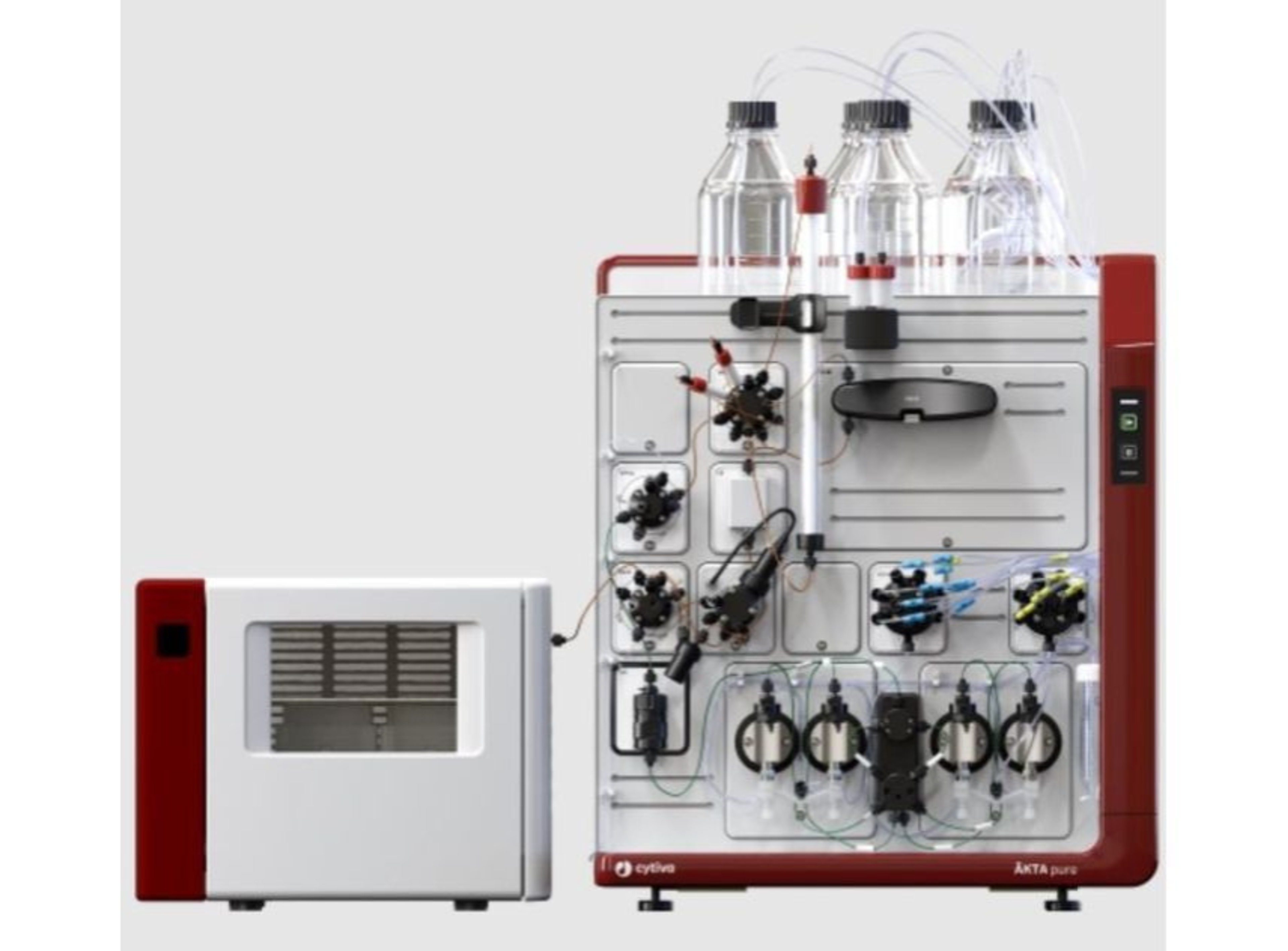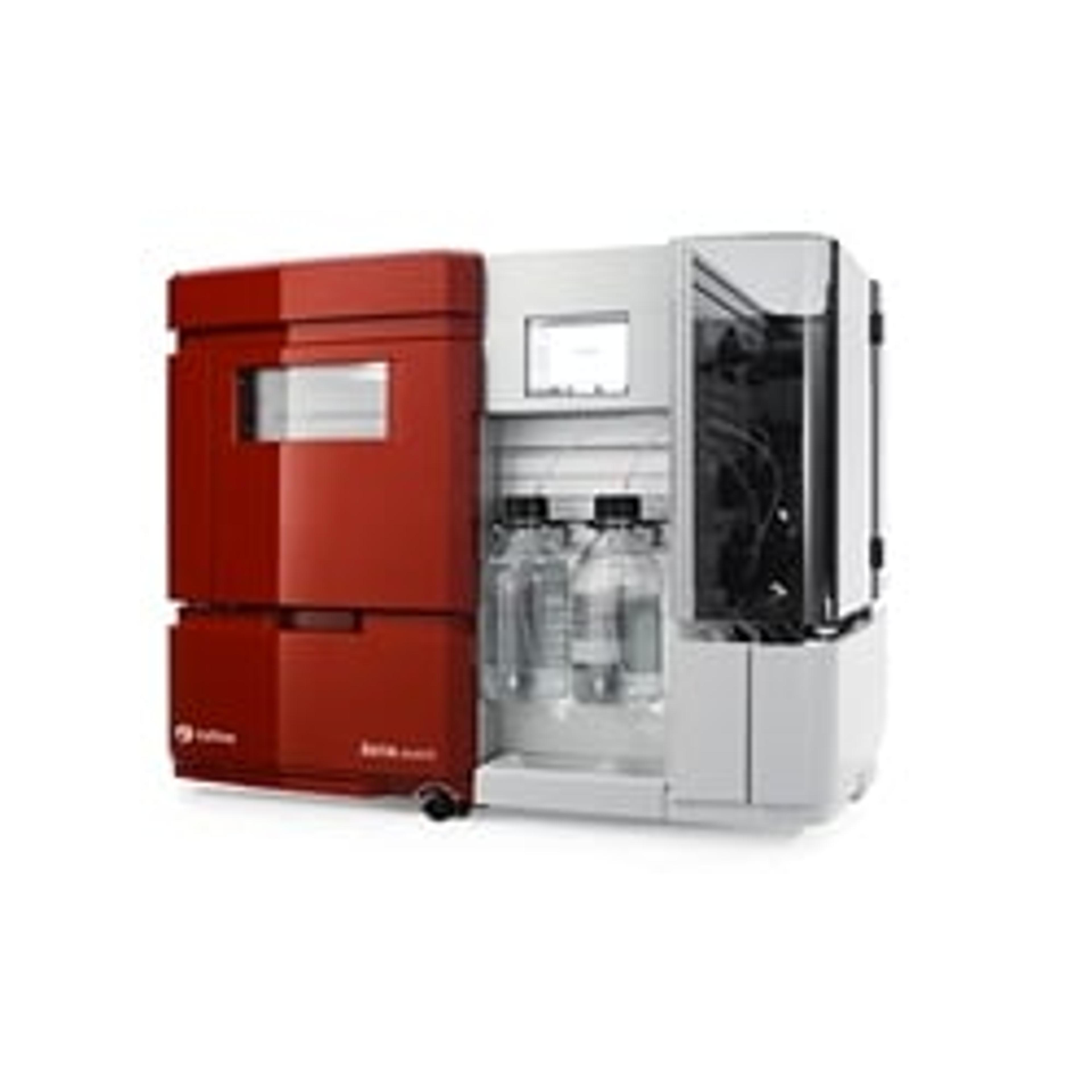Scientists master protein complexity
Experts share insights on protein complexity — offering tools and breakthrough discoveries that empower researchers to overcome obstacles in academia and industry
2 Jan 2024Proteins are the current focal point of scientific research. They are diverse in nature and function and play critical roles in nearly all aspects of life. SelectScience speaks with scientific experts from Cytiva, Inger Solomonsson, Jon Lundqvist, and Elin Sivertsson, on protein complexity, analytical methods, the instrumentation that solve these problems, and working with new forms of monoclonal antibodies such as antibody drug conjugates (ADC) and bispecific antibodies.

Unraveling protein complexity
Proteins are the building blocks of life and play a crucial role in most biological processes. They are involved in everything from structural support and transportation to enzymatic reactions and cellular signaling. Understanding protein complexity is essential to unlock the mysteries of life and to develop new therapeutic interventions. Delving into the world of proteins is not an easy task — their intricate structures and diverse range of functions present significant challenges for researchers.
To gain deeper insights, we spoke with our panel. Elin Sivertsson, a researcher and biotech expert at Cytiva told us, “Proteins are really interesting to work with and are so diverse. From antibodies and structural proteins to enzymes and receptors, there are so many different proteins with different structures and biological functions. There is still so much more to learn.”
Notably, protein purification is an important factor to consider when addressing the challenges associated with protein research, often due to the wide range of protein variability. Jon Lundqvist, senior scientist at Cytiva with over 20 years of experience shares his thoughts, “Most protein purifications that are performed today are quite straightforward, in the sense that you use recombinant proteins and have a tag.” Lundqvist continues, “However, it's becoming more apparent that the high-hanging fruits are the most challenging ones, and we have been busy purifying the low-hanging fruits, so to speak. This means there are many different kinds of challenges that we need to find solutions for, such as expression levels, purity, and so on. What we are now looking into are the proteins that are not so easy to purify, using the existing products that we currently have.”

To expand on this further, Inger Salomonsson, senior R&D scientist and chromatography expert at Cytiva says, “One of the difficulties we have in obtaining samples is relating to quantity. We do not have access to all the different kinds of proteins or expression systems that our customers work with. As a result, we might need to develop a completely new analytical method or even use completely new instrumentation when we start to work on a new protein or a different expression system.”
Protein research poses significant challenges, particularly during purification. As our scientific understanding evolves, we must continue to overcome new obstacles and expand our capabilities. Lundqvist says, “Around 50 years ago, it was a challenge to purify proteins, because it took a long time and proteins needed to be stable, which required several steps to purify. It could take weeks to purify proteins, which generated low yields. However, when the recombinant technique came in, and you could add a tag to a protein, this made protein purification much easier with higher yields.”
Lundqvist continues, “But now when you already have this kind of technology and you have purified all the so-called ‘easy proteins’, there are still the more difficult proteins we need to purify, such as membrane proteins. These proteins are in an environment where a lot of other proteins are also involved in the purification.”
Some proteins tend to aggregate and form inclusion bodies when they are cultivated and can easily precipitate. All these challenges require a lot of optimizations of cultivation conditions, sample preparation and the different purifications steps involved.
Inger Solomonsson Research Engineer, Cytiva
To add to this point, Solomonsson states, “Some proteins tend to aggregate and form inclusion bodies when they are cultivated and can easily precipitate. Different conditions during cultivation affect the expression and stability of the protein. All these challenges require a lot of optimizations of cultivation conditions, sample preparation and the different purifications steps involved.”
While exploring the most common challenges faced by their customers, Sivertsson states, “I think that poor protein stability and low yield can be an issue when working with recombinant proteins. Characterizing protein interactions quickly and accurately, while using limited amounts of material, can be a challenge.” Elin continues, “It can be difficult to know what assay conditions are suitable for a certain protein, as optimal conditions can vary a lot.” These issues have motivated the team to dedicate their work to overcoming such complexities, by individually assisting customers in tackling challenges to achieve optimal outcomes.
Mastering protein complexity
By unraveling the intricacies of complex proteins, researchers can make significant contributions to many fields, ultimately benefiting human health and how we live. The experts at Cytiva collaborate closely with customers on a daily basis, offering tailored support to address their unique research challenges.
around 50 years ago, it was a challenge to purify proteins, because it took a long time and proteins needed to be stable, which required several steps to purify.
Jon Lundqvist Research Scientist, Cytiva
“The world of antibodies has become a lot more complex. In the past, protein purification was usually performed by highly skilled protein purification scientists, whereas today, this can be performed by any researcher, and protein purification is just one step in their research. Now there are new forms of monoclonal antibodies, such as antibody drug conjugates (ADC) and bispecific antibodies. These new forms of antibodies might require different purification techniques or an additional purification step to separate different variants,” explains Salomonsson. ADCs are a class of targeted therapeutic agents that combine the specificity of monoclonal antibodies (mAbs) with the cytotoxic potency of small molecule drugs.
When speaking directly about the technology they offer to combat these issues, Salomonsson states, “The MabSelect™ VL protein L is a resin that addresses this new purification challenge. We run analytical SEC almost all of the time, but more advanced analytical techniques, like mass spectrometry and SPR have now become standard,” she says. With the expanding diversity of antibody variants, there is a growing demand for chromatography resins capable of efficiently capturing and purifying these diverse variants. MabSelect VL resin with a redesigned protein L ligand has been designed for high binding capacity and improved alkaline stability, for affinity capture of antibody Fabs, bispecifics, and other variants containing a kappa light chain.
The world of antibodies has become a lot more complex.
Inger Solomonsson Research Engineer, Cytiva
Salomonsson helps customers by developing protocols for protein purification with an emphasis on optimizing simplicity and universality. “We give suggestions on how to modify protocols for specific purification needs, such as using an additive for precipitating proteins. We also develop application examples of how our products can be used for different proteins — which we show in data files, application notes, scientific posters, handbooks and within presentations.”
Delivering exceptional service
To provide an exceptional service to their customers, the team established a dedicated tech support group that responds to customer inquiries and shares extensive knowledge and experience on various chromatographic technologies and sample preparation techniques. Salomonsson states, “We develop products that will improve convenience, purity, yield and be timesaving. An example is the Superdex™ 200 Increase resin, which could be run faster and still give higher resolution than its predecessor.” To help support her work even further, she uses the ÄKTA pure™ 25 and ÄKTA pure micro chromatography systems, ALIAS® autosampler, Superdex and Superose™ Increase columns, Capto™ HiRes S 5/50 columns and HiTrap™ MabSelect PrismA™ resin.
Lundqvist also assists customers in overcoming their challenges and strives to provide effective solutions and support. “Firstly, we ask our customers what type of problems they are facing, and how they can best solve their problems. Once we understand this, we can then see if we have solutions with our existing products. We also give them suggestions to try to help them with the methods and the protocols they are using, such as if they need to add different kinds of additives to the buffers that they're using, or so forth.” he explains. However, what happens if there are no products available to help them? “If we don't have the products that can solve their problems, we can locate ligands that bind to their protein, which can be added to one of our base matrixes which can help to solve the problem.” Jon and his team carefully analyze the challenges faced by their customers, aiming to identify solutions within their existing portfolio or explore new ideas to address specific needs.
Going above and beyond for customer success
To carry out this personalized service for each customer and overcome protein complexity, Lundqvist relies on the utilization of specialized equipment. “Since the customers come from different environments, we often are speaking about those researchers who work more manually with spin trap and gravity trap, and who don't have a chromatography system. Nevertheless, we do tend to recommend that customers use a chromatography system, because then you have more control over their purification.” Lundqvist continues, “There are different levels of chromatography systems, but we have the simplest one, called ÄKTA start™, progressing to ÄKTA go™, ÄKTA pure™, and finally ÄKTA avant™, depending on the volumes that you want to purify, and the complexity that you have with your purification.” Cytiva also provides prepacked columns with different kinds of resins, depending on what the need is. “If our customers have His-tag, we have different iMac products that bind the His-tag. We have over 500 products, so it depends on the need of the customer.”
When it comes to Biacore consumables, the Biotin CAPture Kit is great choice when you have little prior knowledge of what conditions for immobilization and regeneration would be suitable for your protein of interest.
Elin Sivertsson Senior Scientist, Cytiva
To further expand on surface plasmon resonance, a key technology used. Sivertsson states, “We have developed the new Biacore™ 1 series of instruments, which comes with several features that can help overcome these challenges. The temperature-controlled sample compartment can help keep sensitive samples stable for longer. As for SPR in general, analyte consumption in Biacore 1 series is low, so you don’t need large amounts of sample. Functionalities, such as the Activity queue, allow customers to maximize instrument usage by queueing up assay runs overnight.” Biacore 1 series systems enable the generation of high-quality data. With three system configurations to choose from, the instrument can adapt to your group's requirements in terms of sample capacity, sensitivity, and throughput. “High sensitivity and low short-term noise help produce high quality kinetics or affinity data. When it comes to Biacore consumables, the Biotin CAPture Kit is great choice when you have little prior knowledge of what conditions for immobilization and regeneration would be suitable for your protein of interest,” explains Sivertsson. This tool provides an excellent alternative for unstable proteins that are sensitive to low pH, which is typically employed in standard amine coupling methods. It requires only the biotinylation of the ligand, and the team offer a user-friendly protocol for biotinylation on their website. “The kit is based on reversible biotin capture and includes a streptavidin-oligo conjugate that is hybridized to a complementary oligo on the sensor chip surface. The regeneration solution included in the kit breaks the bond between the oligos, making the chip ready for a new round of analysis — it can be used 100 times.”
Sivertsson and the expert team’s focus is on delivering exceptional customer service and providing customers with effective tools to meet their needs. For example, Sivertsson has been actively engaged in creating comprehensive training material for Biacore 1 series instruments. This includes practical lab exercises designed for new customers to independently explore or undertake alongside regional field application specialists, thereby gaining in-depth knowledge about the instruments and common assays. Additionally, Cytiva offers highly sought-after e-learning material that has garnered popularity among their customers.
Looking ahead
The dedicated team at Cytiva are continuing to work hard to provide effective solutions for customers to overcome their protein research challenges. Looking forward to the future, Salomonsson expressed her aspiration to share her knowledge with researchers, enabling them to readily obtain the proteins they need for studying the causes and potential cures of diseases such as Alzheimer disease. Ultimately, she hopes that her work will make a meaningful contribution towards saving lives, while Lundqvist is committed to delivering solutions that empower his customers to overcome common obstacles in protein research. Sivertsson hopes her work will benefit her customers in academia and industry, enabling them to generate high-quality SPR data rapidly and effectively. “As I used to be a Biacore customer myself, I know that Biacore instruments play a very important part in both basic research performed in academic labs, and in applied science in industry labs. Our customers advance life science research every day, whether that means characterizing a protein interaction for a scientific paper or doing quality control of a biological drug candidate. It is nice to think that through my work, I play a small part in helping them do that,” Elin concludes.



